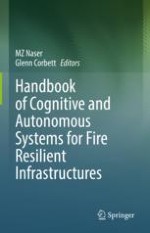2022 | OriginalPaper | Buchkapitel
8. The Role of Artificial Intelligence in Firefighting
verfasst von : Jonathan L. Hodges, Brian Y. Lattimer, Vernon L. Champlin
Erschienen in: Handbook of Cognitive and Autonomous Systems for Fire Resilient Infrastructures
Aktivieren Sie unsere intelligente Suche, um passende Fachinhalte oder Patente zu finden.
Wählen Sie Textabschnitte aus um mit Künstlicher Intelligenz passenden Patente zu finden. powered by
Markieren Sie Textabschnitte, um KI-gestützt weitere passende Inhalte zu finden. powered by
